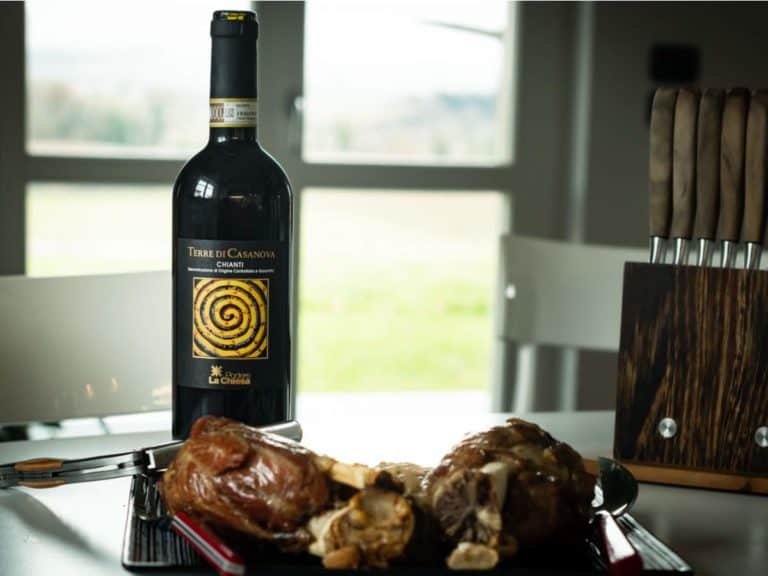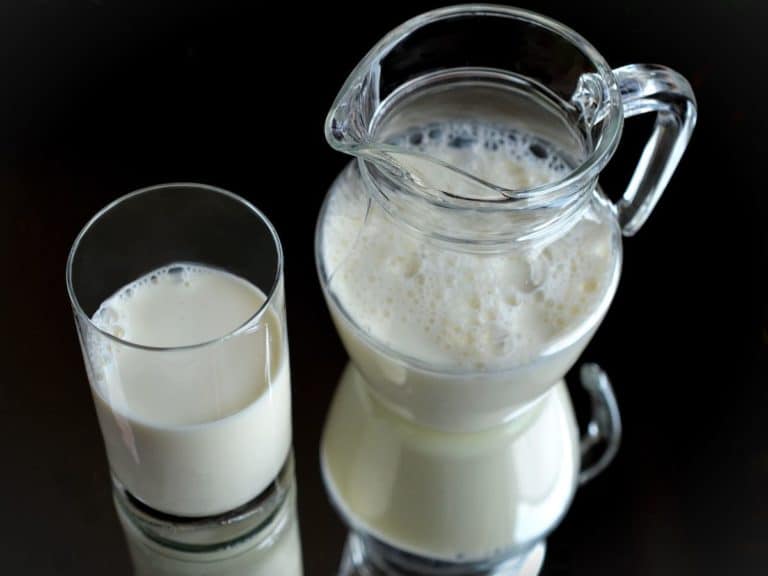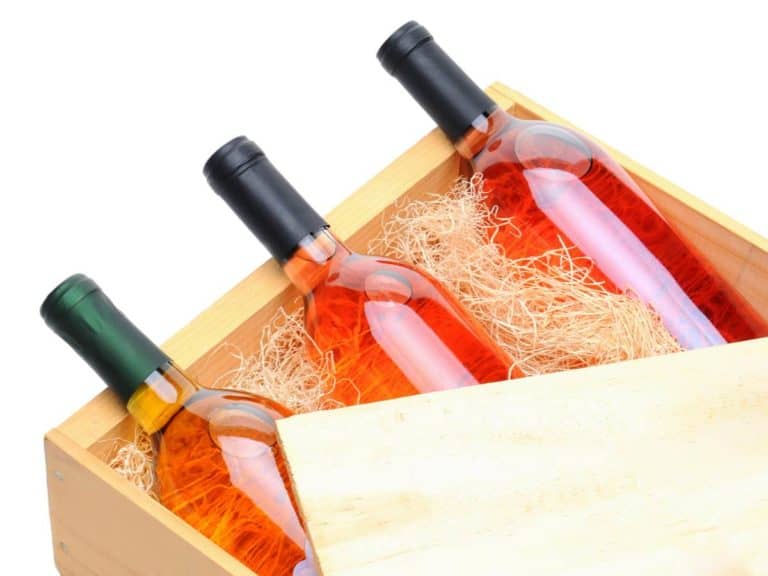How to Make Rosé Wine
Rosé wine is one of the most popular styles of wine produced for summer drinking. However, making this wine style is a little bit different than making a straight white or red wine. The process of making rosé is why this wine has such versatility when it comes to flavor, aroma, and appearance.
The most basic way of making rose wines is the direct press method. In this process, grapes first pressed produce juice. Then the juice gets fermented to produce alcohol. The grape skins get removed once the desired color and flavor are achieved. When rose wine stabilizes, it gets bottled for consumers.
Below you’ll learn exactly how rosé wine is made and what methods are used to produce it. You’ll also learn how the rosé production process affects rosé’s color, flavor, and aroma. Keep reading to learn more about making rosé wine and the different grape varietals used to produce it.

How Is Rosé Wine Made?
Making rosé wine is different from any other type of wine, though it starts the same way. Here is a general breakdown of the steps involved in making rosé wine:
- The grapes are pressed. The first step of the winemaking process involves pressing the grapes to remove the juice from the skins. Most wineries use a pneumatic press to extract the grape juice from the skins. This process involves inflating a large balloon mechanism within the wine storage barrel that squeezes the grapes as it expands.
- The grapes are left in the barrel with the grape skins. Leaving the grape juice in with the skins gives rosé its pinkish coloring. The longer the grape juice is left in contact with the red grape skins, the deeper in color it becomes.
- The grape juice is fermented. At this point in the process, the grape juice is separated from the grape skins and fermented. Fermentation is when the wine develops its alcoholic content. The alcohol in the wine is created by the natural grape juice sugars converting into ethanol.
- The grape skins are removed. Once the wine has achieved its desired color, flavor, and appearance, the used red grape skins are stripped out and the wine is left to sit and stabilize. Stabilization allows any lingering sediment in the wine to settle to the bottle of the barrel as dregs and increases clarity.
- The wine is bottled. Once the rosé wine has had enough time to stabilize, the wine is poured into individual bottles and corked.
The above process is the basic method used in making any rosé wine, but there are some variations on the process that lead to different rosé varieties. The many variations on how rosé is made is one of the biggest influences on the versatility of this wine.
Four Methods for Making Rosé Wine
All rosé wine involves leaving grape juice in contact with the grape skins during the winemaking process, but four distinct methods are used to create rosé wines.
Direct Press Method
The direct press method of making rosé is the most basic method. The direct press is the pressing method described in the previous section, where wine is left in contact with grape skins for a select amount of time after pressing before the wine is fermented.
Direct pressing tends to result in the lightest form of rosé wine since the wine is only left in contact with the grape skins for the amount of time it takes to remove the grape skins from the juice. This leads to a rosé with only the slightest hint of pink coloring.
Limited Skin Maceration Method
The most common method for making rosé is limited skin maceration.
Limited skin maceration is very similar to the direct press method except that the wine is left in contact with the grape skins for longer, anywhere from six to forty-eight hours. Since contact with the grape skins gives the wine its coloring, the longer the wine is in contact, the darker it gets.
Once the wine has achieved the preferred color and richness, it is racked – racking is the process of drawing the wine off the grape skins and discarding them. At this point, the wine can be fermented as normal until it achieves its desired alcohol-by-volume (ABV).
Saignée Method
The saignée method is known for the French word saignée, which means “to bleed.”
Saignée is a method used to create both rosé wines and red wines. With this method, part of the wine juice is drained away, leaving the wine left to steep with the skins longer. This larger concentration of skins to juice leads to a rosé with a richer taste and flavor.
In many cases, rosé made by the saignée method as a byproduct of making red wine may not be as high in quality as rosé made deliberately as its own vintage. However, some of these secondary wines can still have a delicate flavor profile that is interesting, especially with the addition of secondary flavor notes like cloves or cinnamon.
Blending
Blending is the process of blending together both white wine and red wine to make a rosé or pink wine. In some cases, blending happens once both wines are already fermented, and in others the blending occurs when white and red grapes are crushed together in the wine press.
For a basic house rosé, households may add a bit of red wine to white to give it a deeper flavor and a pink tinge. In other cases, the varietals of each contributing grape are chosen carefully to make a more technical blended rosé wine.
However, this method of blending rosé is actually banned in PDO wines across much of Europe, especially in areas where traditional rosé is made.
What Affects the Color of Rosé Wine?
The color of rosé wine is affected by two major factors: the amount of time the wine spends in contact with the grape skins, and what color the grape skins are.
- Time: Wine-makers vary the amount of time they leave rosé in contact with the grape skins before fermentation to darken the rosé and give it a deeper color. rosé wines with a lot of skin contact tend to be richer and have a more full-bodied flavor than direct press rosé wines.
- Grape color: Different grape varietals have varying levels of pigment in their skins, which causes some grapes to be very dark (almost a blue-black color) and others to be a pale green. Red grapes are used in making rosé wine, but the darkness of the grapes and the varietal used have a major impact on the final color of the wine once it ferments.
Looking at the color of a rosé wine can be a good quick indicator of what its flavor profile will taste like. Pale pink rosé wines such as Provence rosé tend to be crisp and very dry, while ruby or salmon-colored rosé wines tend to have stronger flavors of berries and stone fruit.
What Affects the Taste of Rosé Wine?
Like rosé’s color, there are a few different things that affect what any given variety of rosé wine tastes like. These are the production factors that affect how rosé tastes (Source: Wine Butler):
- Grape variety: There are over ten thousand varieties of grapes in the world, and the type of grape used in making rosé has a huge impact on what it tastes like. Grapes vary in flavor based on their growing conditions such as climate and soil composition.
- Additional flavor notes: Some varieties of rosé have spicy notes such as cloves, cinnamon, and orange peel added that can make their overall flavor more complex and nuanced. These flavors tend to come out in heavier varieties of rosé, such as those created using the saignée method.
- Serving temperature: There’s a good reason most rosé wines are served chilled rather than room temperature. Serving this style of wine cold can help bring out a bigger variety of flavors in it.
- Processing method: The method used to process rosé wine can affect both the gravity of the wine and the final flavor. Rosé wines that are left in contact with red grape skins develop more tannins and fruit-like flavors that make them sweeter and fuller-bodied. Direct press and limited maceration rosés are drier and crisper wines.
The number of factors that go into making rosé are why this wine can come in so many different varieties. Whether you prefer dry wines or sweet wines, rosés have something to offer everyone in the flavor department.
The range of flavors in rosé wines often comes as a surprise to many people who have never had anything more complicated than a classic American-style sweet white zinfandel.
Put a glass of authentic Sangiovese rosé up against a dry Provencal in a taste test, and you’ll quickly see how different these pink wines can end up.
Grape Varieties Used in Making Rosé Wine
There are several popular wine grape varieties that are used to make traditional rosé wines. There is no particular type of grape used to make rosé like with some wine vintages since rosé refers more to a wine style and processing method rather than a specific varietal like Cabernet.
Here are a few of the most common grape varieties you’ll see used in making rosé wine:
- Grenache: Grenache is a Spanish wine grape that requires hot, dry weather conditions to thrive. Grenache grapes produce a ruby-red rosé. Grenache rosé has an intense flavor profile that pairs well with richer foods like spicy food and roasted meat.
(Source: Wine Folly) - Sangiovese: Sangiovese is a more savory wine grape than most other varieties. These grapes create a rustic, earthy-tasting rosé with deep fruity notes. However, one of the major advantages of Sangiovese is that it’s so versatile and can be used to create a wide range of different rosé wines. (Source: Wine Folly)
- Syrah: Syrah is a common wine grape grown worldwine to create red wines, and this grape does well in many different growing conditions. Using these grapes to create rosé wine gives the wine an oily mouthfeel and a rich, full-bodied flavor. Syrah contains spicy secondary flavor notes such as cherries, lime, and white pepper.
- Mourvèdre: Mourvèdre wine grapes are known for their full-bodied flavor and the high ABV wines they produce. These grapes are also a popular base for mulled wines since they are relatively high in tannins. When used in making rosé, Mourvèdre grapes create a wine with a light peach color and bright aromas of berry and flowers. (Source: Babylon Stories)
- Pinot Noir: Pinot Noir is a difficult grape to grow since it only grows well in cool areas that receive large amounts of rain. These same growing conditions can also make grapes susceptible to disease. Pinot Noir creates a rosé wine that is neither too sweet nor too dry, with a nice balanced middle ground.
Even though these are the most common varieties of grapes you’ll see used in making rosé, the method of creating a rosé wine can be used for any red grape varietal.
Can You Grow Your Own Grapes to Make Rosé Wine?
While it’s technically possible to grow your own grapes to make rosé wine depending on where you live, it’s easier to leave authentic rosé production up to the professionals.
Many of the grape varieties used to create rosé, such as Pinot Noir and Sangiovese, grow in very specific growing conditions that make them difficult for amateurs to cultivate.
If you’d like to serve a rosé wine and you don’t have the time and resources to grow your own grapes, you can create a house rosé by mixing a portion of red wine into white wine until the desired color and flavor is achieved.
Making your own homemade rosé blends at home is simpler than trying to grow grapes, and it allows you to use your own favorite wine varieties to experiment and find a blend you really like.
Making Rosé Wine is an Art Form
Even though some people may think of making rosé as a simple process, there’s a lot of factors that go into it.
Authentic rosé produced from regions that are known for it is produced with a lot more care and artistry than the average mass-produced wine you’ll find on the supermarket shelf.
If you’re interested in making rosé, try blending some reds and whites to see if you can come up with a house wine you’re happy with!
Read Next: Healthiest Rose Wine You Could Buy





